Excerpts from Jim Conrad's
Naturalist Newsletter
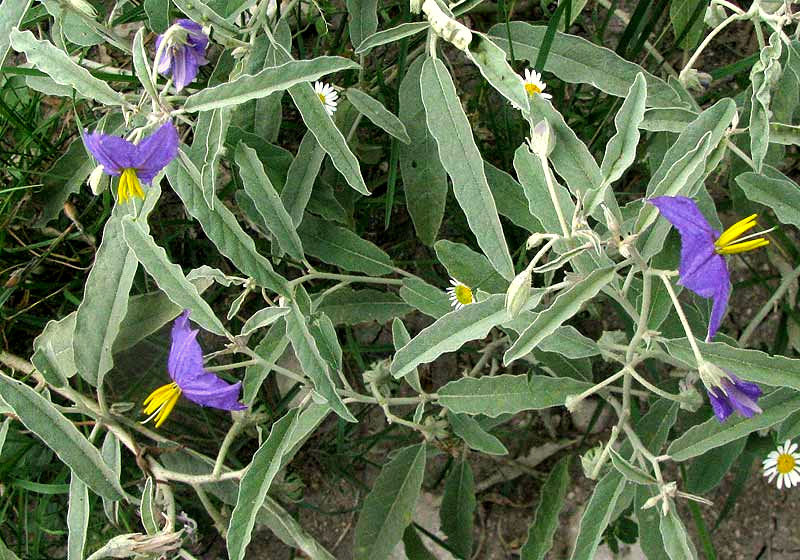
from the June 9, 2013 Newsletter issued from the valley of the Dry Frio River in northern Uvalde County, southwestern Texas, on the southern border of the Edwards Plateau; elevation ~1750m (~5750 ft); N29.62°, W99.86°; USA
SILVERLEAF NIGHTSHADE
One of the most commonly occurring, flowering roadside weeds here is the one shown above.
It's worth taking a close look at the yellow, banana-like things in the blossom's center, as we do below:
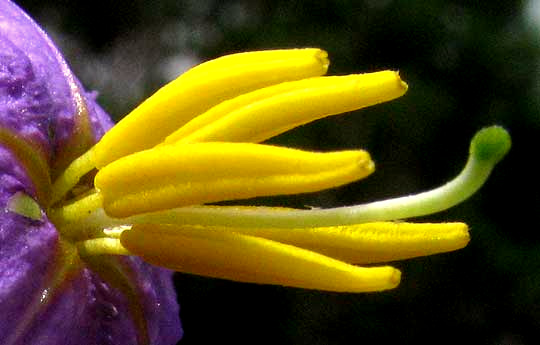
You might guess that the bananas are the stamens' baglike, pollen-producing anthers. Normally when a flower's anthers are mature and ready to shed pollen they split down their sides releasing pollen from the resulting slits. The anthers in our photo don't do that. You can see tiny holes, or pores, at the anthers' tips, and that's where pollen exists the anthers.
In the plant world in general this is a novel way for an anther to shed its pollen. However, such anthers are the rule for plants known as the nightshades, and this is a nightshade. It's the Silverleaf Nightshade, also called White Horse-nettle, Prairie Berry and Trompillo. It's SOLANUM ELAEAGNIFOLIUM, a member of the huge, important Nightshade Family, the Solanaceae, in which we also find potatoes, peppers and tomatoes. In fact, tomato plants are in the same genus, Solanum; they're Solanum lycopersicum.
Interestingly, I read that Silverleaf Nightshade growing in humid regions don't normally produce spines or prickles, while those of arid regions are more commonly prickly. Our plants pictured above bore no prickles at all. However, their silvery leaves abundantly bore special kinds of whitish hairs known to be "stellate," or "star-like," as seen below our dissecting scope here:
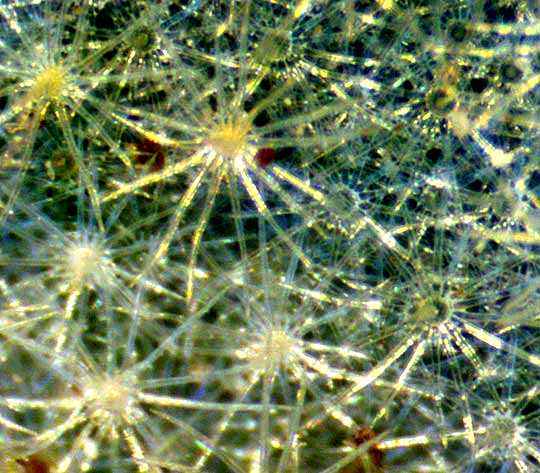
The fruits are regarded as toxic. Still, the indigenous Pima people of North America used the berries as a vegetable rennet, rennet being used to curdle milk, as in making cheese. The Kiowa used the seeds together with brain tissue to tan leather. And since Silverleaf Nightshade produces such a deep root system and is able to survive very droughty conditions, and the 3/4-inch-wide flowers actually are quite pretty, some enlightened gardeners where water is scarce plant the species in their rock gardens.
from the December 2, 2012 Newsletter issued from the valley of the Dry Frio River in northern Uvalde County, southwestern Texas, on the southern border of the Edwards Plateau; elevation ~1750m (~5750 ft); N29.62°, W99.86°; USA
SILVERLEAF NIGHTSHADE'S LITTLE YELLOW TOMATOES
A very common sight along weedy roadsides and in other disturbed areas is the dying-back, mostly leafless, knee-high perennial herb bearing what appear to be cherry-sized, yellow tomatoes shown below:
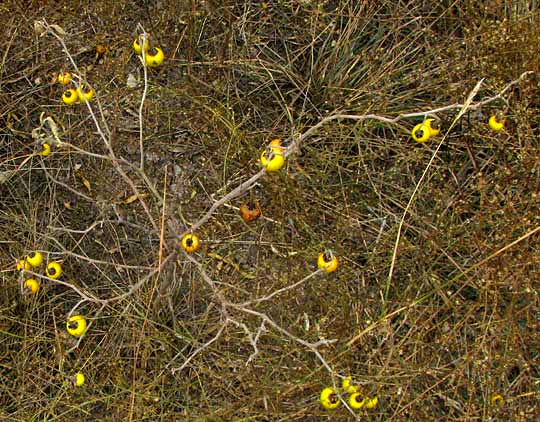
If you know your wildflowers, even if you've never seen this species, probably you'll recognize from the tomato-like fruit that this as a member of the Nightshade Family, the Solanaceae, and the Nightshade/Tomato genus, Solanum. A closer look at a mature fruit on a branch bearing some leaves not yet fallen off can be seen:
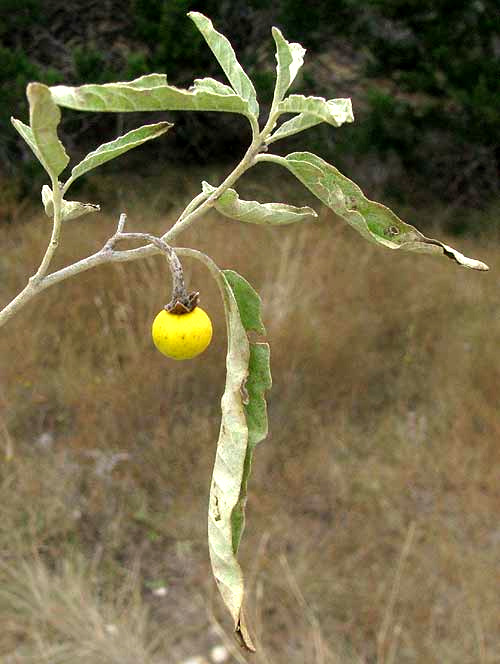
The fruit's structural similarity to that of a tomato can be seen in the fruit cross-section below:
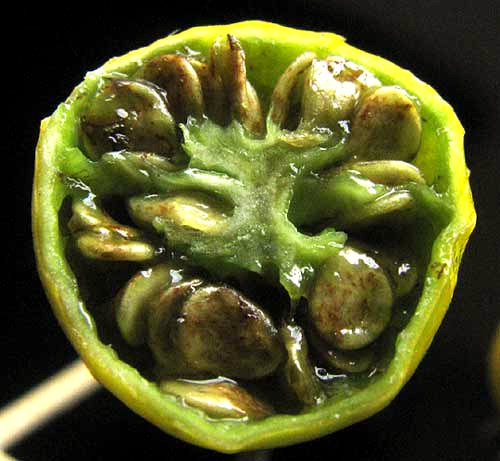
The seeds are very like those of a tomato and they arise from an irregularly shaped structure in the fruit's center, the columella, very similar to the whitish, somewhat pithy center of a tomato. Tomato plants now are assigned to the nightshade genus Solanum, so these similarities are no surprise.
Our roadside plant often is called the Silverleaf Nightshade or White Horsenettle. It's SOLANUM ELAEAGNIFOLIUM. During the warm months it bears very pretty purplish blossoms with yellow centers composed of the slender, arched anthers typical of the nightshades. Though Silverleaf Nightshade occurs in so many arid, hot parts of the planet that it's hard to know for sure where its native home is, experts suppose that originally it is from northern Mexico and the US Southwest. In Australia, where it has been declared a "Weed of National Significance," it has become a serious problem in the country's wheat belt. Farmers there have reported Silverleaf Nightshade's roots penetrating the soil to sixteen feet (5m). Studies have shown that each plant is usually part of a colony with inter-connecting root systems which enable individual plants, if somehow their own roots are damaged, to keep receiving nourishment from its neighbors.
The plant's attractive little yellow tomatoes are toxic to cattle and sheep if eaten in large enough quantities, though goats seem to have fewer problems. Symptoms include profuse diarrhea. Eating the fruits regularly can cause significant weight loss and eventually death after seven to 14 days of sickness.